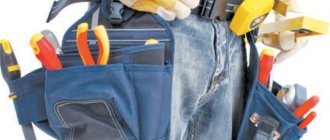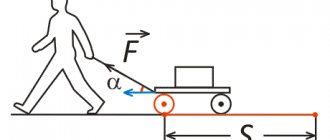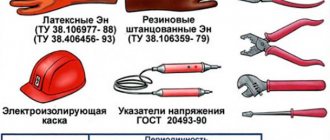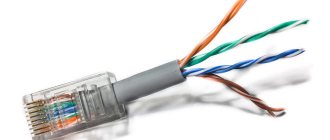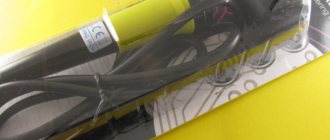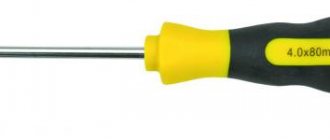SHARE ON SOCIAL NETWORKS
FacebookTwitterOkGoogle+PinterestVk
Being an indispensable attribute of electricians and occupying a worthy place in the work suitcases of mechanics, as well as many other craftsmen, pliers and pliers have deservedly received the title of the most popular tools. However, no one really notices the differences between them, since the instruments look very similar. But there are still differences, and quite significant ones. It is not without reason that for each of them there are separate technical requirements and GOSTs.
Pliers are used in a wide range of applications
Pliers and pliers: what is the difference between the variations of pliers tools
The history of the appearance of devices of this group goes back at least to the era of the Greek gods. Since time immemorial, mankind has been familiar with blacksmith's pliers. Over time, changes occurred not only in human society, but also in tools. When exactly and by whom exactly the design of pliers, which are the prototype of modern products, was created is unknown. However, the undeniable fact is that the thing turned out to be incredibly practical and necessary.
Many people do not see the difference between pliers and pliers, since they look very similar
Modern pliers tools are characterized by great diversity. The main variations that are presented to consumers are:
- mites;
- round nose pliers;
- wire cutters;
- pliers;
- pliers.
Each of the above categories has subtypes that differ in such parameters as the size of the working surface, shape, and purpose. For example, round nose pliers are best suited for cutting cable cores.
This is interesting! The cone-shaped shape of the tool provides comfort when bending cable cores.
Pliers are considered a more functional tool than pliers
Different shapes of the cutting part and its different dimensions dictate the operating characteristics of the cutters. For example, products designed for repairing electronic devices are characterized by smaller sizes. You should know that they are completely unsuitable for cutting cables for various purposes, as this is inconvenient and impractical.
To perform work related to delicate materials, special attachments are used - plastic or made from other raw materials. The presence of notches on the pliers allows for maximum reliability in fixing the part during the soldering process of boards. At the same time, the special shape and angle of the jaws make it possible to get into the most inaccessible areas.
What is the difference between pliers and pliers: the main parameters of the tools
According to the interpretation of GOST, pliers are a tool designed to grip and clamp pipes and parts of various shapes. Externally, the products are very similar to pliers. They are equipped with flat jaws, which are an extension of the working area for gripping bolts or tubes. In addition, the tools presented are most often equipped with side cutters to remove insulation.
Let's take a closer look at the difference between pliers and pliers. The following features of these tools should be noted:
Pliers and pliers have different working surface shapes
- the ability to adjust the gap of the working surface of the jaws and the degree of force of the product by rearranging the hinge is provided only for pliers;
- pliers are tools designed to perform only one action, while pliers are multifunctional products;
- pliers are equipped with wire cutters for cutting thin wire; high-strength steel is used in their manufacture;
- often pliers are characterized by a flat working surface with a notch along the entire length.
This is interesting! On the modern market you can also find 200 mm combination pliers, but this is the exception rather than the rule.
In addition, it is worth noting that the design of the pliers is designed for greater compression force. This means that manufacturers select the appropriate grade of material for these products—one that is characterized by a greater degree of strength.
Perhaps the most significant difference between pliers and pliers is that the former provide the ability to solve a larger number of different everyday tasks. In many ways, they can be an excellent replacement for end cutters, small house vices or side cutters, gripping almost any small-sized object.
With pliers, the width of the jaws along the entire length is always the same, unlike pliers
What are they for?
The main purpose of pliers is to grab, hold and manipulate various elements. Therefore, the device “can”:
- hold parts - washers, electrical wires, sheets of metal and other elements;
- bend various objects, such as wire.
This convenient and practical tool can be of various shapes and sizes, which allows you to carry out any plumbing and electromechanical manipulations. But it is not recommended to expose any model to high temperatures, use it as a hammer, or extend small pliers. They also need to be properly cared for by regularly lubricating the joints with oil.
Subscribe to our Social networks
What are pliers for: the secrets of the tool's functionality
This type of tool belongs to the group of metalwork and assembly products. Speaking about what pliers are made of, it is worth noting that their design is quite simple and is represented by the so-called jaws and handles. Thanks to the jaws, which have a rectangular cross-section and a pyramidal shape, they can be used to grip various objects or bend metal elements.
In accordance with GOST, pliers are produced in several variations:
- with short and long jaws - ranging from 25 to 55 mm and from 50 to 64 mm, respectively;
- with standard handles and insulating elements that provide the ability to perform work under high voltage.
As for the total length of the tool, it ranges from 12 to 22 cm. In the manufacturing process, high-quality tool steel U7A is used, which has undergone complete hardening. Finished products are subjected to anti-corrosion treatment by chrome plating, chemical oxidation or phosphating. The shade of the instrument directly depends on the processing method - it can be metallic, matte gray or black.
Pliers are used in plumbing and assembly work
Speaking about the types of pliers, it should be noted that, in addition to the classic models, there are also other variations on the market, intended for work of one nature or another. For example, the so-called “platypuses” are pliers with elongated elements that resemble tweezers. At the same time, thanks to the powerful handles, they are characterized by high pressing force. There are also products with curved jaws, which are an excellent solution for working in hard-to-reach places.
Tips from experienced users
To increase the service life of the tool, you should not use it for unusual work. Sometimes pliers are used as a stand when riveting metal parts with a hammer, or to hold live contacts. This leads to loosening of the hinge, and a strong spark when the contacts open can melt the jaws like welding. It is necessary to lubricate the pliers in a timely manner, wipe them from moisture with a rag, and clean them from aggressive chemical compounds. A careful and careful attitude will help keep the linings on the handles intact and increase the overall service life of the tool.
Which tool do you use most often?
PliersPliers
Pliers: photos and a few words about the types of products
In addition to the above options, other types of products are no less popular. These include:
- adjustable;
- clamping;
- isolated;
- for wires.
Clamping pliers are devices that function like a hand vice. Most of these instruments are equipped with an adjustable screw, which additionally serves as a lip clamp, thus increasing the pressure.
Pliers can have jaw lengths ranging from 25 to 64 mm
This is interesting! In addition to being used as clamps in various situations, clamp-type pliers are often used in the process of welding work.
Adjustable pliers are another essential tool in every craftsman's kit. These products are ideal for turning and gripping a variety of objects, including nuts and bolts, by connecting the lips in a hinged manner. Due to their versatility, such tools can replace most wrenches.
As for insulated pliers, they have rubberized handles, which act as a guarantee of safety during electrical installation work.
Additional features of pliers
Pliers and pliers, the difference between which lies in functionality, must be selected in accordance with the type of activity of the master. Electricians and plumbers must select the appropriate type of hand tools.
Based on the needs of a specialist who uses pliers, the latter may have various additional capabilities. Many manufacturers supply their products with side cutters. This device allows you to remove insulation from a cable and cut wire.
Sometimes the pliers have a special edge on the face that allows them to cut very strong wire.
In other cases, the working area of the pliers extends beyond the hinge joint. The handles of such models have serrations that allow you to hold the workpiece not only with sponges. This is not convenient for every master, but it depends on personal preference.
Pliers: the embodiment of practicality and versatility
Since pliers (photos of products can be found on the Internet) are close “relatives” of pliers, they are very popular in the process of performing plumbing and electrical installation, as well as many other types of work.
Pliers are used by mechanics, electricians, mechanics and many other craftsmen
One of the main features of pliers is the presence of notches with notches on their working surface. This part is designed to grip and firmly hold smooth round objects. Often pliers have a combined jaw surface. This means that, in addition to a separate recess for round parts, there is part of a flat working area. In addition, some tools are equipped with several recesses for parts of different sizes.
This is interesting! Many people wonder which is correct – “passatizhi” or “pliers”? According to the rules, you must use the second spelling.
A special feature of adjustable pliers is that they allow you to adjust the degree of compression of the jaws. It is for this purpose that their design provides for several variations in the location of the hinge in specially designed grooves. The process of rearranging it is quite simple; it comes down to spreading the handles and moving it to the desired recess.
In addition to the degree of compression, it is also possible to adjust the distance between the edges of the jaws, thus expanding the range of dimensions of the objects being grabbed. Regardless of the price, pliers are often equipped with side cutters. These elements can be used to strip insulation and cut wire or cable cores. In addition, they can be equipped with special edges on the front of the jaws, which makes it possible to cut hard wire.
The tool market offers a large selection of pliers from different manufacturers
Another parameter that determines the difference between pliers and pliers is the expanded working area of the latter tools due to their equipping with notches on the handles located immediately behind the hinge-type connection. Thanks to this, it is possible to grip parts not only with jaws.
Note! Today, Knipex pliers produced by the famous German company have won the special respect of many users. These products are famous for their high quality and reliability.
In addition, pliers can be either plumbing or electric type. Moreover, the latest models must certainly have markings indicating a maximum voltage of 1000 V.
Design specifics
This type of tool also includes pliers. They are used for their needs by electricians, mechanics, installers and all home craftsmen. In the French dictionary there are terms from which the name of the most universal of pliers tools comes. They mean “rod and hinge” and literally describe the design of the device.
This tool combines wire cutters and pliers in one mechanism. Do not use them on hard or large materials: this will lead to breakage or deformation of the jaws or handles. Cutting on the working part allows the canvas to clearly fix the object.
The middle area of the jaws has cutting surfaces. Their location makes it possible to snack on only one side. The existence of cutters is the main difference between pliers and pliers. The appearance of the working part is approximately the same for different options.
The transfer of applied force depends on the overall size of the tool, and other capabilities and characteristics are almost identical.
Different manufacturers introduce various new features, special sharpening and hardening into the design of the cutting device to improve the consumer qualities of the product. It is impossible to unambiguously choose a leader in this category.
Professional side cutters: little helpers in big things
The most common cutting tools include the so-called wire cutters. In essence, these are side cutters-pliers, the basis of which is the principle of leverage. It is due to this that the force that must be applied to the surface of the object being processed increases in order to cut through the material through the cutting edges.
Rubberized dielectric side cutters allow you to work with live wires
The main components of the cutters are:
- A handle that acts as a lever. Its length determines exactly how much force the master will need to apply to carry out certain operations. Often, the handles have a special coating, which provides comfort and protection during the work process.
- Cutting edges. These parts vary in size, shape and location in relation to the plane of the handles. In addition, you can find nippers with pobedit tips on sale that will help you cope with even the most durable materials.
Related article:
Metal scissors, manual and electric: review of cutting tools
Characteristics of tools. Varieties of devices based on the principle of operation and design. Review of models.
The range of modern tools market is represented by various models of side cutters. For example, precision products are intended for precision work, dielectric ones provide the ability to work with live wires up to 1000 V, and reinforced ones will cope with the task of cutting metal, fittings and wire with a diameter of more than 3 mm.
A feature of diagonal tools, which are used for cutting steel and copper wires, is that their heads are located at a certain angle to the surface of the handle. Professional models are made from tool steel, which undergoes multi-stage hardening. The two working sections of the presented devices are connected to each other by means of a hinge on the axis, which is capable of withstanding a monotonous load of up to 75 kg.
High-quality professional side cutters are made from hardened tool steel
Secrets of choosing side cutters: how to avoid mistakes
Before you begin the process of selecting tools, you should clearly define what they will be used for. For use in the home, small classic side cutters are quite suitable. Using them, it will be possible to repair electrical wiring, cut wire, and also strip cables. If the tools are needed for professional use, each master focuses on personal needs.
In addition, you should pay attention to the material that was used to make the working part. The cutting edges of products that deserve the right to be called high-quality are made from hardened steel, and therefore are characterized by unsurpassed strength. Even after working with wires made of steel, it is unlikely that nicks will be visible on them. Ideally, the working surface of any side cutter should have an anti-corrosion coating.
An equally important element that deserves special attention is the handle of the tool. The longer it is, the more effort will be required during the work process.
Important! To prevent your hand from slipping at the most critical moment, it is better to give preference to tools whose handles have a textured texture.
First of all, when buying side cutters you need to pay attention to the material and length of the handle.
The handles of truly high-quality products are equipped with a coating that is resistant to temperature changes, as well as to oils and many other chemicals. Since this tool is designed for comfortable work in various conditions, all its elements must be as reliable as possible.
In conclusion, it is worth noting that side cutters (side pliers) are not a tool that cannot be replaced during home renovation work. However, installers, electricians and mechanics who often have to cut through cables, wires, nails and fittings will certainly appreciate their properties.
What it is?
Pliers are a very popular tool in a home craftsman’s kit, and craftsmen – locksmiths, mechanics, as well as electricians and other specialists – cannot do without them. With all the richness of choice of a wide variety of tools, a more necessary product, perhaps, does not exist. Pliers are a type of working equipment; they are indispensable for gripping thin pipes and parts of various shapes.
Pliers combine the structural elements of pliers and wire cutters. Special notches are applied to the jaws of such a device; the strength of fixation of the captured part largely depends on their configuration and size. Notches can also be made on the back of the hinge, a little closer to the end of the handle. Thanks to these features, the part can be held with either side of the pliers.
When creating modern models, much attention is paid to sharpening the cutting edges; they are usually sharpened at different angles, and hardening is performed under special conditions that vary for each manufacturer. The assembly of the tool largely affects its quality: ideally, the hinges should not have any backlash or any gaps, while the tool handles should move apart without effort with the fingers of one hand
Many inexperienced users confuse pliers with pliers. These are devices with a similar purpose, but nevertheless completely different.
- The main difference is that the pliers, in addition to the oval notch, also have a cutting edge, and at the hinge joint there is a notch for cutting metal materials.
- Technically, pliers are a more powerful tool than pliers; they are made from chrome vanadium steel, which is characterized by increased strength and durability, the degree of hardening reaches 53 HRC.
- In addition, pliers are usually larger than pliers, they have thicker clamping jaws, but at the same time shorter.
- Pliers are multifunctional, while pliers are used for narrow purposes.
Goebbels: features and distinctive features of the instrument
Goebbels are a tool that is a type of pliers that is used by both amateurs and professionals. They are often used in pairs, and in a wide range of tasks - from installing plumbing to repairing vehicles.
According to the standard, all adjustable pliers are made from special tool steel, which is characterized by the presence of vanadium and chromium in its composition. Thanks to this, they acquire qualities identical to those of wire pliers, which allows them to perform work under voltage. During their manufacture, not only stamping is used, but also forging elements. In this case, key parts (head and fasteners) are ground.
Goebbels are made from steel containing chromium and vanadium
As for the handles, they often occupy no more than 40% of the total length of the product. They are coated with a special compound that prevents slipping. This not only increases comfort while working, but also protects your hands from injury.
The head of the Goebbels, like a similar part of the pliers, is that part of the product that can have different levels of inclination, amounting to 90 or 45 degrees. Regardless of the value of this parameter, it is always quite narrow and relatively long. Due to the presence of a special recess in it, you can easily carry out work even in narrow and inconvenient places.
Depending on their design, Goebbels are divided into two main groups:
- With rack type of jaw spread. This structure is characterized by simplicity and reliability. It is represented by two parallel slats with teeth, between which the axis of the product moves easily and can be fixed by the master.
- With grooves for spreading the jaws. The design feature is the presence of an overhead milled cardan joint. For the purpose of breeding sponges, straight-line movements are used. As a result, a fastening is formed that prevents the hinge from slipping.
Professional Goebbels from the NWS brand are characterized by high quality parts
When performing work at significant heights, the best solution would be to use a tool with a special loop designed to secure the wrist. This eliminates the possibility of the product falling at the most critical moment due to a careless grip. When working with plastic pipes or ceramics, it is better to give preference to sponge attachments, which will provide reliable protection to the surface of the part from various damages.
Note! The modern market presents many models from different manufacturers. The well-known company for the manufacture of professional Goebbels and pliers NWS deserves special attention. The high level of quality of the brand's products is confirmed by the special Solingen marking.
In addition, you can find products whose homeland is Sweden or Germany. They are also distinguished by high quality materials, ergonomics and modern design.



